This article was co-authored by Mark Co, DPM. Dr. Mark Co is a Podiatrist who runs his own private practice in San Francisco, California. Dr. Co specializes in treatments for bunions, ingrown toenails, toenail fungus, warts, plantar fasciitis and other causes of foot pain. He also offers custom orthotics for the treatment and prevention of foot and ankle issues. Dr. Co completed a Master of Business Administration (MBA) at New York University and an MA in Electrical Engineering and Computer Science at Johns Hopkins University. Dr. Co also completed his DPM at the California School of Podiatric Medicine and a residency and internship at the Kaiser Permanente Medical Center, Santa Clara, California. Dr. Co was awarded San Francisco's "Top 3 Podiatrists" in 2018, 2019, and 2020. Dr. Co is also a member of the CPMA (American Podiatric Medical Association).
There are 15 references cited in this article, which can be found at the bottom of the page.
This article has been viewed 82,542 times.
If your feet are tired and achy after a long day of standing, you likely want to find some relief! Simple home remedies like a warm water soak, foot massages, and over-the-counter pain medications will help with some of the achiness, and you can also try some stretching exercises to relieve discomfort. If you can, avoid standing in the same place for extended periods to help prevent the pain in the first place. Also, choose a sturdy, comfortable pair of shoes that fit well and provide support.
Steps
Home Remedies
-
1Soak your feet in warm water for pain relief without medication. Fill a small tub with warm water or use a foot spa meant for that purpose. Add in bath salts, such as Epsom salt, or another type of foot soak if you'd like, then rest your feet in the water for 20-30 minutes.[1]
- The warm water may help relieve pain.
- Avoid foot soaking if you have diabetes. As a diabetic, you're more likely to develop foot problems and infections.
-
2Try ice if you have a foot injury or your foot is inflamed. Ice can be helpful if your foot is inflamed or injured. Your skin will likely be warm to the touch if it's inflamed. Wrap ice in a washcloth or other thin cloth and place it on your feet for 15-20 minutes. You can repeat this process 2-3 times a day as needed.[2]
- Never place ice directly on your skin, as that can lead to frostbite.
Advertisement -
3Give yourself a foot massage to relieve sore muscles. Sit down and bring 1 foot up on the other knee. Pour a dollop of lotion into your hands and then rub your foot down, massaging the ball, heel, and toes. Use your thumbs to press deeper into your foot muscles, rubbing them with a circular motion.[3]
- Gently move your toes back and forth with your fingers to stretch the muscles.
- Repeat with the other foot. If you have someone willing, you can even ask them to massage your feet!
-
4Take NSAIDs to help with inflammation and relieve pain. NSAIDs include pain relievers like aspirin, ibuprofen, and naproxen sodium. They can help with pain relief, particularly if your feet are slightly swollen after standing on them all day.
- Talk to your doctor about which NSAIDs are right for you. If over-the-counter versions aren't enough, discuss prescription options.
- Always read the bottle for the recommended dosages.
-
5Try oral analgesics if you can't take NSAIDs for pain. Analgesics are solely pain medications. They don't help with inflammation, but they can provide relief, particularly if you can't take NSAIDs for medical reasons.[4]
- Check the bottle for recommended dosages.
- Acetaminophen is a common over-the-counter pain medication. Don't mix it with alcohol. Also, be aware that this medication is in many over-the-counter medication mixes, such as cold-relief drugs. Always check the bottles so you don't overdose on acetaminophen.
- Don't exceed 4,000 milligrams of acetaminophen in 24 hours, and avoid using it longer than 3 days in a row.[5]
-
6Rub in a topical analgesic for quick pain relief. These medications work in different ways. Some have pain relievers in them, such as the ingredient found in aspirin. Some distract your feet with a different sensation, such as the ones that cool your feet with menthol or eucalyptus. Others create a slight burning sensation that dulls the pain.[6]
- You can find these at your local drugstore.
Stretching
-
1Use a towel to stretch your feet and Achilles' tendon. Sit on the floor or the bed with your legs out in front of you. Place a towel or large band around 1 foot, aiming for the ball of your foot. Pull the towel towards you to stretch out the muscles in your foot.[7]
- Hold this position for 30 seconds then repeat on the other side. Try doing 3 sets of this exercise.
-
2Roll your feet over a round object to help with heel pain. Sit down in a chair and place a round object under your foot, such as a foot roller, water bottle, or even a can of soup. Place your arch on the object for a few seconds, pressing down lightly, then roll your arch over the object, going forward and back. Keep rolling back and forth for about a minute.[8]
- Switch to the other foot when you're done.
-
3Strengthen your feet with a toe-towel pickup. While sitting in a chair, place a washcloth under your foot. Try to pick up the towel with just your toes. Leave your heel on the ground while you do so. You're just lifting your toes to pick up the washcloth off the ground 1 to 2 inches (2.5 to 5.1 cm)[9]
- Once you've picked the washcloth up, release it and pick it up again, aiming for at least 10 times with each foot.
- This exercise will also increase flexibility.
-
4Work your calf and foot muscles with a wall push. Stand up and face the wall. Position yourself about 1 foot (30 cm) away from the wall with your feet shoulder-width apart. Put your hands on the wall and step back with one leg, straightening it out as you do. Bend the knee on your front leg a little until you feel the calf muscle stretch out in the other leg.[10]
- Straighten the front leg again and repeat the exercise 10 times on each side.
- You can also step forward slightly with your front leg, which will bend your back leg a little.
Prevention
-
1Balance your weight on both feet. If you lean to one side or the other, you may get poor circulation in your feet, causing more pain and stiffness. Ask your boss if it’s okay for you to move things on the floor, such as cords or small rugs, so you’re standing on flat ground. Also, check your balance throughout the day to make sure you're positioning your weight on both feet.[11]
-
2Try compression hose or socks if you have swelling. These types of socks and hose provide extra support to your ankles. They fit tightly around your feet, and they can help prevent achiness as well.[12]
- You can find these at drugstores, online, or at medical supply stores.
-
3Cut down on friction with 2 pairs of socks. If you have trouble with blisters, doubling up on socks may be the solution. It provides you with extra cushioning, which can reduce your chances of developing blisters. You may need to go a size up for your second pair of socks so they'll fit better over the first pair of socks.
- If you do want to double up on socks, always try on shoes with double socks to see how they fit.
-
4Stand on a padded mat if you’re standing in one place to take pressure off your feet. These mats are also called anti-fatigue mats, and they cover large areas of the floor. They provide cushioning for your feet and legs, which will provide you with some relief over a long day.[13]
- If you don't have a padded mat at work, ask your boss if you can get one. You might say, "Can I speak to you for a minute? I was wondering if you'd consider putting in anti-fatigue mats behind the counter. They don't cost very much and they prevent your employees from tiring out so quickly because they provide cushioning. That means we can work harder for you!"
Supportive Shoes
-
1Get measured for shoes to ensure you choose the right size. Even if you've been measured in the past, it's a good idea to get measured again. Your feet can change over time, and if you're buying the same shoe size you always have, then you could be hurting your feet more.[14]
- Go to a shoe store that specializes in measuring feet and finding the correct fit. Try to get measured annually for shoes.
- Some chiropractors and osteopaths may have a selection of special shoes to help you with your support.
-
2Try shoes on before buying them to make sure they fit well. Always put shoes on and walk around in them at the store before buying them. Make sure they aren't scrunching your toes and that you have 0.25 to 0.5 inches (0.64 to 1.27 cm) of room between your toes and the end of the shoe.[15]
- Shop for shoes after a day of work. Your feet swell throughout the day, so you want shoes that will still fit comfortably at the end of the day.
- Once you buy a pair, it's a good idea to walk around in them for a bit before trying to work in them. That way, you can see if they are painful or if they rub in a particular spot.
-
3Find shoes that support high arches if you have them. High arches can cause you pain if your feet aren't properly supported. When visiting a shoe store, as the clerk to help you find shoes with high arches, and you should have less pain when you wear them.[16]
- To check if the shoe will support your arch, take the insole out of the shoe, if possible, and hold it up to your foot. If it matches the contours of your foot, it's likely a good fit. If not, you may need to get another pair.[17]
- If you don't want to buy new shoes, look for shoe inserts made for people with high arches.
-
4Buy new insoles to customize the fit of the shoe to your feet. If you find your shoe isn't as comfortable as you'd like, insoles can help with that issue. They can lift the heels, for instance, or provide more padding as needed. Some stores even offer machines that will read your feet so you can buy the best insole for your feet.[18]
- If you don't have access to a machine that reads your feet, look at the bottom of your shoes. If you have a normal gait, they should be worn in the middle of your heel and the middle of the ball of your foot. If they're worn more to the outer edge or more to the inner edge, find insoles that will help correct that issue.
- You can find insoles online, in drug stores, or in some shoe stores.
-
5Consult with a podiatrist if you think you'd benefit from custom-fitted shoes. While insoles can help, if you still have a lot of pain, you may need shoes that have been made just for you. That way, they will support you in all the right ways without creating pressure points.[19]
Expert Q&A
Did you know you can get expert answers for this article?
Unlock expert answers by supporting wikiHow
-
QuestionHow can I relax my feet after standing all day?
 Mark Co, DPMDr. Mark Co is a Podiatrist who runs his own private practice in San Francisco, California. Dr. Co specializes in treatments for bunions, ingrown toenails, toenail fungus, warts, plantar fasciitis and other causes of foot pain. He also offers custom orthotics for the treatment and prevention of foot and ankle issues. Dr. Co completed a Master of Business Administration (MBA) at New York University and an MA in Electrical Engineering and Computer Science at Johns Hopkins University. Dr. Co also completed his DPM at the California School of Podiatric Medicine and a residency and internship at the Kaiser Permanente Medical Center, Santa Clara, California. Dr. Co was awarded San Francisco's "Top 3 Podiatrists" in 2018, 2019, and 2020. Dr. Co is also a member of the CPMA (American Podiatric Medical Association).
Mark Co, DPMDr. Mark Co is a Podiatrist who runs his own private practice in San Francisco, California. Dr. Co specializes in treatments for bunions, ingrown toenails, toenail fungus, warts, plantar fasciitis and other causes of foot pain. He also offers custom orthotics for the treatment and prevention of foot and ankle issues. Dr. Co completed a Master of Business Administration (MBA) at New York University and an MA in Electrical Engineering and Computer Science at Johns Hopkins University. Dr. Co also completed his DPM at the California School of Podiatric Medicine and a residency and internship at the Kaiser Permanente Medical Center, Santa Clara, California. Dr. Co was awarded San Francisco's "Top 3 Podiatrists" in 2018, 2019, and 2020. Dr. Co is also a member of the CPMA (American Podiatric Medical Association).
Podiatrist Prepare a foot bath with two quarts of warm water and three tablespoons of Epsom salt. You can also use one tablespoon of table salt instead of Epsom salt if you don't have any. Take a load off and soak your feet for 15 minutes. You can also stretch your calf out to relieve some of the tension in your feet. Do some calf stretches for 10-15 minutes and you should feel some tension dissipate in your feet.
Prepare a foot bath with two quarts of warm water and three tablespoons of Epsom salt. You can also use one tablespoon of table salt instead of Epsom salt if you don't have any. Take a load off and soak your feet for 15 minutes. You can also stretch your calf out to relieve some of the tension in your feet. Do some calf stretches for 10-15 minutes and you should feel some tension dissipate in your feet.
Warnings
- If you have constant foot pain or new foot pain, always go see a doctor. You may have a condition that needs medical attention.⧼thumbs_response⧽
References
- ↑ Mark Co, DPM. Podiatrist. Expert Interview. 21 April 2020.
- ↑ https://www.mayoclinic.org/symptoms/foot-pain/basics/when-to-see-doctor/sym-20050792
- ↑ https://www.health.harvard.edu/feet-and-foot-care/7-ways-to-fix-foot-pain
- ↑ https://www.health.harvard.edu/feet-and-foot-care/7-ways-to-fix-foot-pain
- ↑ https://www.getreliefresponsiblyprofessional.com/sites/getreliefresponsiblyhcp_us/files/grradultdosingchart.pdf
- ↑ https://www.health.harvard.edu/feet-and-foot-care/7-ways-to-fix-foot-pain
- ↑ Mark Co, DPM. Podiatrist. Expert Interview. 21 April 2020.
- ↑ https://www.csp.org.uk/public-patient/rehabilitation-exercises/foot-pain
- ↑ https://www.csp.org.uk/public-patient/rehabilitation-exercises/foot-pain
- ↑ Mark Co, DPM. Podiatrist. Expert Interview. 21 April 2020.
- ↑ https://goaskalice.columbia.edu/answered-questions/prickly-feeling-feet-standing-all-day
- ↑ https://www.health.harvard.edu/staying-healthy/boosting-circulation-with-compression-stockings
- ↑ https://goaskalice.columbia.edu/answered-questions/prickly-feeling-feet-standing-all-day
- ↑ Mark Co, DPM. Podiatrist. Expert Interview. 21 April 2020.
- ↑ https://wexnermedical.osu.edu/blog/what-are-the-bottom-of-your-shoes-telling-you
- ↑ https://uihc.org/health-topics/high-arches-you-dont-have-live-pain
- ↑ https://wexnermedical.osu.edu/blog/what-are-the-bottom-of-your-shoes-telling-you
- ↑ https://wexnermedical.osu.edu/blog/what-are-the-bottom-of-your-shoes-telling-you
- ↑ https://wexnermedical.osu.edu/blog/what-are-the-bottom-of-your-shoes-telling-you
About This Article
If you have foot pain from standing all day, there are a few simple ways to get relief. Soak your feet in a tub or foot spa of warm water for 20 to 30 minutes. Try adding some bath salts to help you relax and cleanse your feet. You can also give yourself a foot massage to relieve your sore muscles. Use your thumbs to rub the balls of your feet, heels, and toes in circular motions. If you have heel pain, sit in a chair and roll your feet back and forth on a round object, like a water bottle, can of soup, or a foot roller. To stretch your feet and Achilles’ tendons, sit down with your legs stretched in front of you. Then, place a towel around one foot and gently pull the towel towards you for 30 seconds. Try 3 sets for each foot. For more tips from our Medical co-author, including how to prevent foot pain in the future, read on!
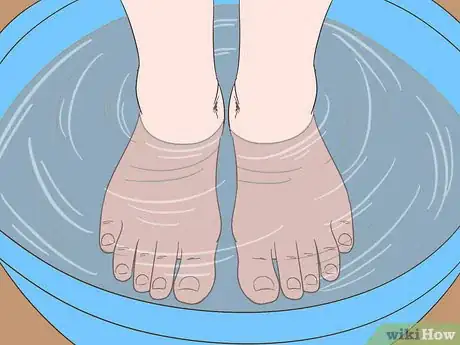

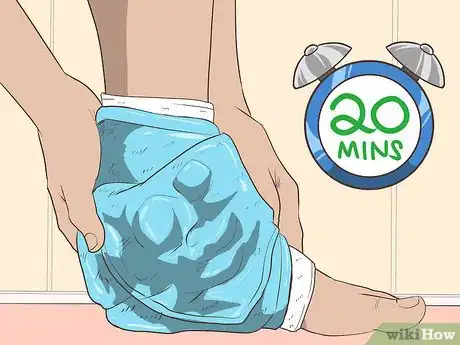
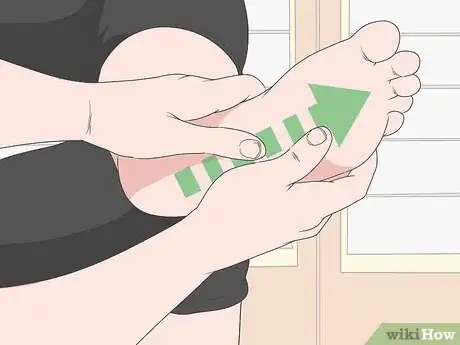
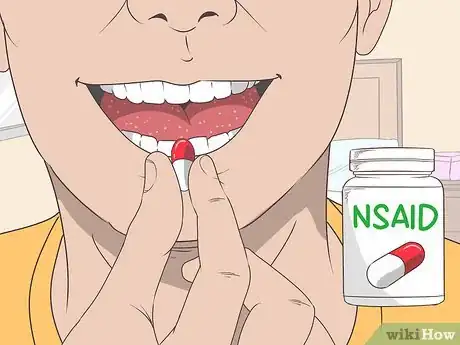



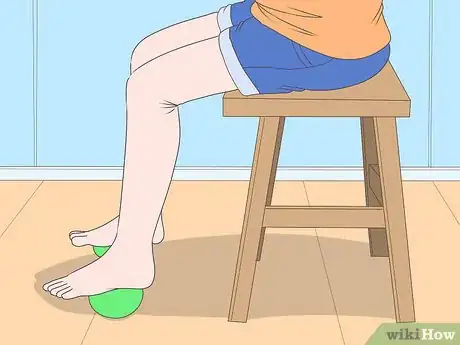
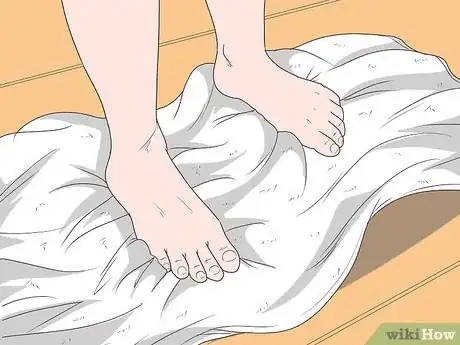
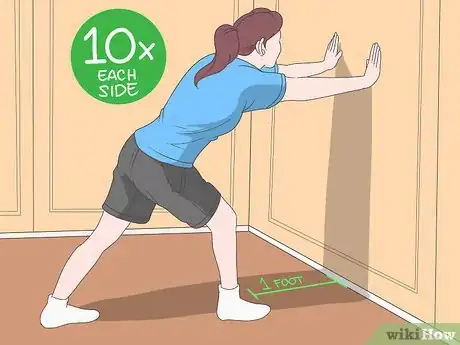
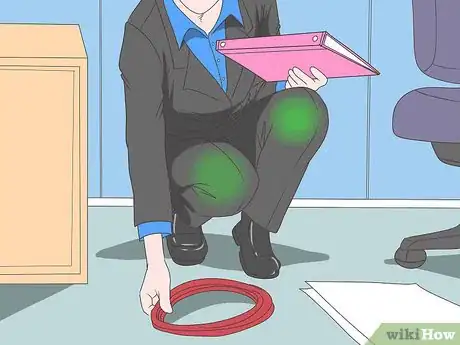

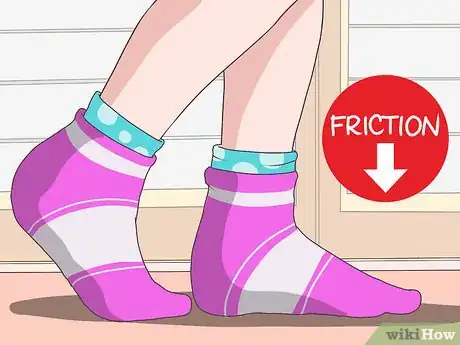
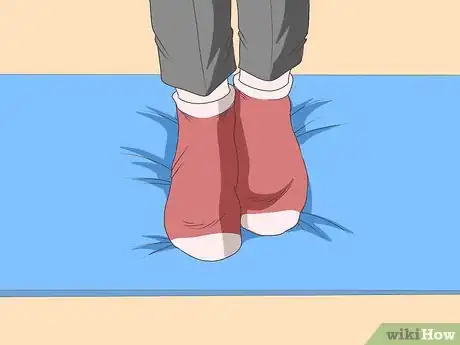
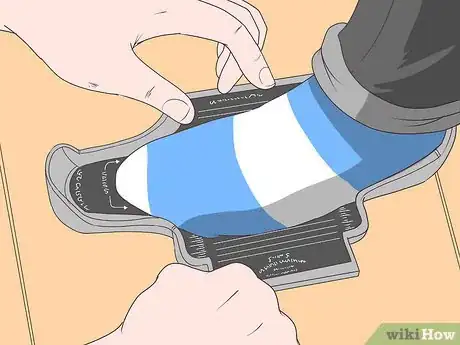


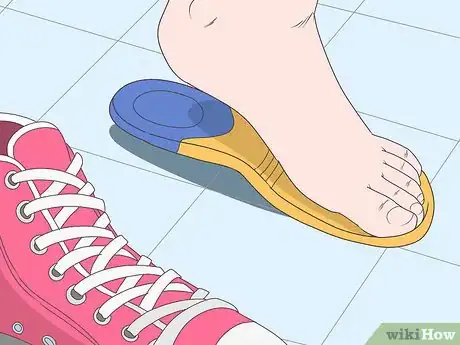


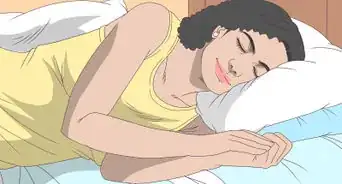
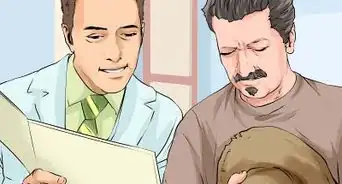




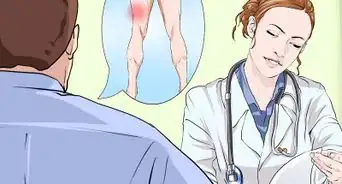



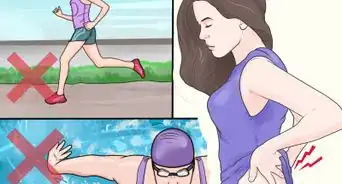
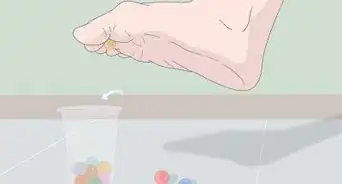
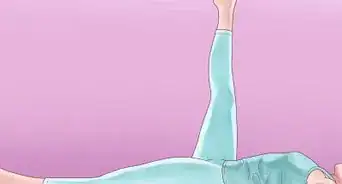








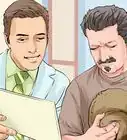




































Medical Disclaimer
The content of this article is not intended to be a substitute for professional medical advice, examination, diagnosis, or treatment. You should always contact your doctor or other qualified healthcare professional before starting, changing, or stopping any kind of health treatment.
Read More...